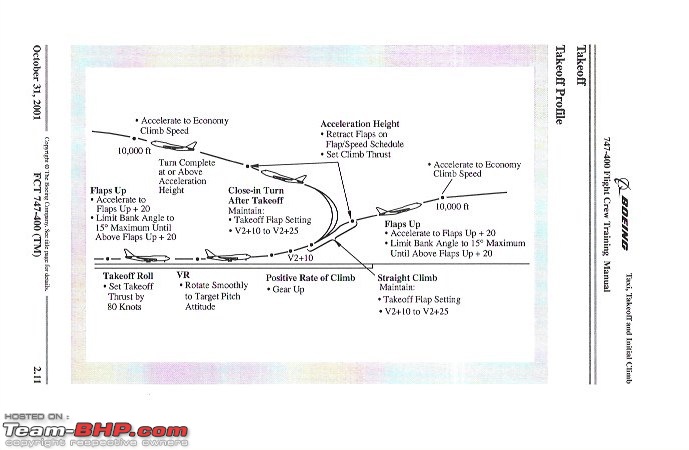Just some more information about take offs. Irrespective of procedures, noise abatement and such, every plane has a certain take-off profile.
I have found this little diagram in one of my old Boeing 747-400 Flight Crew Training manual.

Typically planes after leaving the runway will pitch up sharply and proceed on runway heading till at least 500 feet AGL (Above Ground Level). At this point of time the flaps are still in their take off position and engines are running at take off thrust. The landing gear is retracted as soon as “positive rate of climb” is established. This reduces drag considerably! (Although during the actual retraction of the gear, drag might increase as the doors need to open before the gear can be retracted)
The pilots will have determined (or by company procedure) a so called acceleration height. For instance on the 747-400 this is very often about 1000 feet AGL. At that point thrust tends to be reduced somewhat to (economy climb speed), vertical climb speed reduces and the flaps are being retracted in accordance with the flap/speed schedule. (Speed determines the next flap setting.)
So the aircraft climbs, on a usually slightly shallower angle, but it is still accelerating, flaps are retracted as the subsequent speeds are reached. This reduces drag further and helps acceleration.
Depending on airspace there might be (air) speed restrictions in place as well. In many parts of for instance the USA and Europe below 10.000 feet, your speed needs to be below 250 knots.
So for a given SID procedure, the pilots will also check if it complies with their standard take off profile.
Contrary to what many people thinks, the autopilot can not do the take off. It is always the pilots who perform the actual take off. They are likely to use the auto-throttle system though. As soon as the gear is stowed, many company procedures call for the auto pilot to be engaged. The auto pilot in combination with the auto throttle will fly this profile, within a SID, all by themselves. Flap retraction is as far as I am aware, always manual by the pilot.
This diagram shows two different profiles, one for a straight runway heading departure. The other one is for a close in turn after take off. They might come with different acceleration heights.
Usually close turn in after take off are due to obstacle clearance. Eg. a mountain in front of the runway. So you want to turn as early as possible, you want to get a good vertical speed and you don’t want to change the aircraft configuration during such close to the ground manoeuvres (so no flap retraction).
Although noise abatement procedures are extremely relevant, no pilot will or should ever compromise safety for these.
If you want some more detail, have a look at this training video. The author is a former British Airways (training) 747-400 Captain. He is a very active member on the PSX - 747 400 simulation group and produces these sort of video’s:
Enjoy
Jeroen


 (3)
Thanks
(3)
Thanks

 (2)
Thanks
(2)
Thanks

 (4)
Thanks
(4)
Thanks
 (1)
Thanks
(1)
Thanks
 (2)
Thanks
(2)
Thanks
 (4)
Thanks
(4)
Thanks






